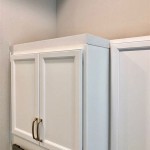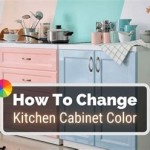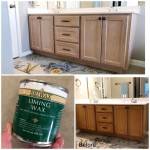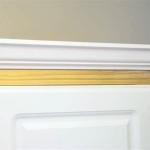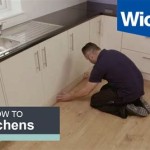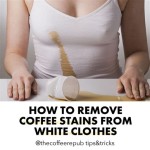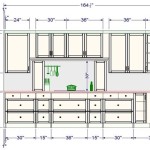How To Remove Sink Cabinet Bottom Plates
Modifying or repairing a sink cabinet often necessitates the removal of the bottom plate. This plate, typically constructed of particleboard, plywood, or occasionally even metal, serves as a structural element, providing support and preventing items stored within the cabinet from resting directly on the floor. Understanding the methods for safely and effectively removing this plate is crucial for a variety of plumbing, renovation, and repair projects.
The removal process can vary depending on how the bottom plate is attached. Common attachment methods include nails, screws, adhesive, or a combination thereof. Furthermore, the age and condition of the cabinet can significantly impact the difficulty of the removal. Older cabinets may have become water damaged, leading to weakened materials and increased resistance to disassembly. Addressing these variables is essential for a successful outcome.
Prior to commencing any removal procedure, it is vital to ensure the safety of the work environment. This includes turning off the water supply to the sink to prevent accidental leaks. Clearing the cabinet of all contents is also a prerequisite, providing unobstructed access to the bottom plate and minimizing the risk of damage to personal belongings. Adequate lighting is similarly important, allowing for clear visibility of fasteners and potential obstructions.
Identifying the Attachment Method
The first step in removing a sink cabinet bottom plate is to accurately determine how it is secured to the cabinet frame. A thorough visual inspection is paramount. Examine the edges of the bottom plate where it meets the cabinet sides and back. Look for visible nail heads, screw heads, or signs of adhesive residue. A flashlight can be useful for illuminating hard-to-see areas. Additionally, a small inspection mirror can aid in examining the back corners of the plate without requiring excessive contortion.
If nails are the primary fastening method, they will typically be small finish nails, often countersunk and filled with wood putty or paint. In this case, carefully scraping away any paint or putty concealing the nail heads may be necessary. Screws, on the other hand, will be more readily identifiable, often featuring a Phillips head or a flat head. The presence of adhesive may be indicated by a visible glue line or by the resistance encountered when attempting to pry the plate loose. Sometimes, multiple methods are used in conjunction; for instance, a combination of nails and adhesive is not uncommon.
In some instances, the bottom plate may be integrated into the cabinet's overall construction, forming a structural component rather than a separate, removable element. In such scenarios, complete removal may not be feasible without compromising the cabinet's integrity. Careful consideration and assessment of the cabinet's design are therefore crucial before proceeding.
Removing a Nailed-In Bottom Plate
When the bottom plate is secured primarily with nails, the removal process involves carefully extracting these fasteners without damaging the surrounding cabinet frame. A nail punch and hammer are essential tools for this task. The nail punch is placed directly on the nail head, and a sharp tap with the hammer drives the nail further into the wood. This technique is preferable to attempting to pry the nail directly out, as it minimizes the risk of splintering the surrounding wood.
Once the nails have been punched through the bottom plate, the plate can be gently pried loose. A flat pry bar or a sturdy putty knife can be used for this purpose. Insert the pry bar or putty knife between the bottom plate and the cabinet frame, applying gentle pressure to gradually separate the two components. It is crucial to avoid using excessive force, as this can lead to damage to the cabinet frame or the bottom plate itself.
If the nails are particularly stubborn or corroded, applying a penetrating oil to the nail heads prior to punching them through may be beneficial. The penetrating oil helps to loosen the grip of the rust and debris, making the nails easier to remove. Allow the penetrating oil to soak for several minutes before proceeding with the nail punch.
After the bottom plate has been removed, any remaining nail shanks protruding from the cabinet frame should be addressed. These shanks can be hammered flush with the surface or carefully extracted using pliers or a nail puller. Removing the shanks prevents them from posing a safety hazard and ensures a smooth surface for subsequent repairs or modifications.
Removing a Screwed-In Bottom Plate
If the bottom plate is secured with screws, the removal process is generally more straightforward than that of a nailed-in plate. Locate all visible screw heads and select the appropriate screwdriver type (Phillips head or flat head) and size. Ensure that the screwdriver bit fits snugly into the screw head to prevent stripping the screw.
Apply firm, steady pressure to the screwdriver while turning the screw counterclockwise. If the screw is particularly tight, applying a small amount of penetrating oil to the screw head and allowing it to soak for a few minutes may help to loosen it. Avoid using excessive force, as this can strip the screw head, making removal more difficult.
If a screw head becomes stripped, there are several techniques that can be employed to remove it. One approach is to use a rubber band or steel wool between the screwdriver bit and the screw head to provide increased grip. Another option is to use a screw extractor, a specialized tool designed to grip and remove stripped screws.
Once all the screws have been removed, the bottom plate should be easily detachable from the cabinet frame. If the plate remains stuck, it may be due to adhesive or paint buildup. Gently pry the plate loose using a flat pry bar or putty knife, taking care not to damage the surrounding wood.
Dealing with Adhesive
When adhesive is used to secure the bottom plate, the removal process requires a different approach. A heat gun or a solvent-based adhesive remover can be employed to soften the adhesive, making it easier to separate the bottom plate from the cabinet frame. Always use recommended safety equipment like gloves and ventilation.
If using a heat gun, apply heat evenly to the area where the bottom plate is adhered to the cabinet frame. Keep the heat gun moving to avoid scorching the wood. As the adhesive softens, gently pry the bottom plate loose using a flat pry bar or putty knife. Be patient and avoid using excessive force, as this can damage the cabinet frame or the bottom plate.
If using an adhesive remover, apply the remover liberally to the adhesive joint. Allow the remover to soak for the recommended amount of time, as specified by the manufacturer. Then, gently pry the bottom plate loose using a flat pry bar or putty knife. Multiple applications of adhesive remover may be necessary to completely break down the adhesive bond.
After the bottom plate has been removed, any remaining adhesive residue should be removed from the cabinet frame using a scraper or solvent-soaked rag. This will ensure a clean surface for subsequent repairs or modifications.
Regardless of the attachment method, meticulous care and patience are essential for successfully removing a sink cabinet bottom plate without causing damage. Proper preparation, the use of appropriate tools, and a methodical approach will contribute to a successful outcome.

How To Replace Under The Sink Cabinet Base

How To Remove A Bathroom Vanity Remodel

Diy Replace Bottom Of Sink Cabinet Without Cutting Pipes Or Face

How To Replace A Rotten Cabinet Bottom

How To Build Under Cabinet Drawers Increase Kitchen Storage Family Handyman

Repairing A Water Damaged Sink Base Cabinet Floor

How To Install Tip Out Tray Under Your Sink The Art Of Doing Stuff

Bathroom Cabinet Kick Plate Makeover Cuckoo4design

How To Replace Rotted Sink Base Cabinet Floor Bottom Easy Home Mender

How To Install Tip Out Tray Under Your Sink The Art Of Doing Stuff
Related Posts

